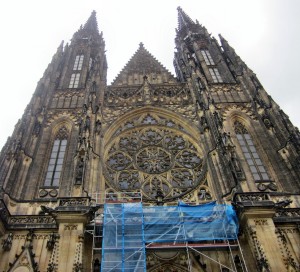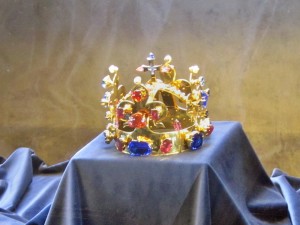Tag Archive
activity architecture art artist building Canada children city CostSaver downtown drive i-95 entertainment Europe event exhibit family festival Florida food fun historic History landmark local Museum music Nature New Zealand Ontario roadtrip sculpture Seattle show sights sightseeing tour tourist Trafalgar travel travelblogger view Washington Washington State water world
US: Clinton, MD – Surratt House Museum for Christmas Past and Present
As you enter the side door of the Surratt House Museum you are walking in the path of John Wilkes Booth the night he killed President Lincoln, since he came here to retrieve a rifle, field glasses and supplies for his run from the law.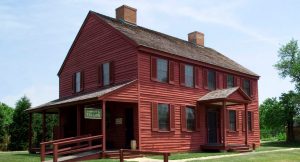
Built in 1852, this was a tavern, an inn, a post office and a polling place. It was a safe house for the Confederate underground. The massive search for Booth led them here to Mary Surratt’s house, and as a result she was tried in a military court and convicted of conspiracy to assassinate the President. On July 7, 1865 Mary Surratt was the first woman to be executed by the federal government.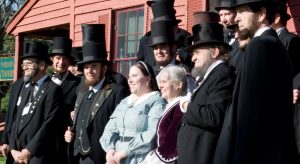
In your visit to this famous house, a docent in 1860’s period clothing walks you through the typical middle class home. History buffs can make reservations for the 12-hour “Escape Route” bus tour. Many of the same roads and houses used by Booth are still in existence and are visited on this excursion which is narrated by nationally-recognized authorities on the Lincoln assassination and John Wilkes Booth’s flight. Tour Dates for 2018: Apr 14, 21, 28 and Sept 8, 15, 22.
If you’re in the Clinton area Sat, Dec 2 – Sun, Dec 10, stop by the Surratt House Museum for their special Christmas program- An Old Fashioned Holiday: Bringing Christmas Past to Christmas Present, celebrating the Christmas of yesteryear amid period decorations, special exhibits and seasonal histories. On the weekend of December 9 and 10, return to enjoy special activities for all ages, cookies, cider, and holiday discounts in the museum’s gift shop.
Location: Surratt House Museum, 9118 Brandywine Road, Clinton, MD 20735
Hours: Wed – Fri 11am – 3pm, Sat -Sun 12 – 4pm
The Surratt House Museum is closed from Dec 12th to Jan 17th.
Tel: 301-868-1121
surrattmuseum.org
For Regional Accommodations, Restaurants & Attractions: visitprincegeorgescounty.com
Cosmos Tour: Prague Vienna Budapest – Good King Wencelas
In Prague we learned about Wenceslas I, or Svatý Václav in Czech, who was the duke of Bohemia from 921 until his assassination in 935, purportedly in a plot by his own brother, Boleslav the Cruel.
In the optional excursion of Medieval Prague, you get to see the Gothic St. Vitus Cathedral, the biggest and most important church in the Czech Republic. It’s located in Prague Castle and contains the tombs of many Bohemian kings and Holy Roman Emperors as well as the St. Wenceslas Chapel.
Due to the popularity of some books which elevated Wenceslas I to a place of heroic goodness and resulted in his being elevated to sainthood, was posthumously declared king, and then became the patron saint of the Czech state. He is that one and only “Good King Wenceslas” of the popular song which is a Saint Stephen’s Day carol written in 1853. over 900 years after he lived.
His death in September 935 (or perhaps 929) was committed by a group of nobles allied with Wenceslas’ younger brother Boleslav. Boleslav invited Wenceslas to a feast, they quarreled, and 3 of his buddies murdered Wenceslas on his way to church. Boleslav thus succeeded him as the Duke of Bohemia.
Since 2000, the feast day of Saint Wenceslas (September 28) is a public holiday in the Czech Republic, celebrated as Czech Statehood Day.
On the Cosmos optional excursion, one is wowed by the grandeur of the St. Wenceslas Chapel in St. Vitus Cathedral where his relics are kept. The room, built between 1344 and 1364, has walls encrusted with over 1,300 semi-precious stones and paintings about the Passion of Christ. The upper part of the walls have paintings about the life of St Wenceslas, and in the middle is a Gothic statue of him.
There is a small door with seven locks in the chapel, which leads to the Crown Chamber containing the Czech Crown Jewels, which are displayed to the public only once every (circa) eight years. Seven different people have seven keys.
Cosmos Tour: Prague Vienna Budapest – Beloved Sisi, Empress Elisabeth
Just as we have our beloved famous Disney princesses, the Austro-Hungarian Empire had theirs – but she was for real. They call her by her nickname Sisi, and she was their Empress for 44 years.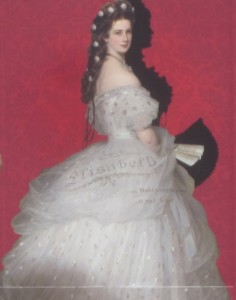
Their have been numerous movies, plays, operas, ballets, books and music about her in the German speaking world. It is probably the trilogy of romantic films about her life which starred a young Romy Schneider which made her a household name. She is so popular that the 3 movies are shown every Christmas on Austrian, German, Dutch, and French television.
Though her husband Emperor Franz Josef adored her, she felt stifled by Habsburg court life and traveled extensively whenever and wherever she could. She loved learning and spoke English, French, modern Greek and Hungarian. Her domineering mother-in-law made her life miserable and even took away her children to raise. Her first daughter died as a toddler and her beloved son Crown Prince Rudolph, heir to the throne, committed suicide along with his lover, and she never fully recovered from that loss.
Empress Elisabeth was vain and did not sit for any portraits after she was 32 and would not allow any more photographs, so that her public image would always remain of her youthful self. She was tall, and compulsively maintained the same low weight all through her life thru exercise (horsemanship, fencing, hiking) and fasting.
Her interest in politics had developed as she matured. She felt an intense emotional alliance with Hungary, and worked toward it gaining an equal footing with Austria. Elisabeth was an ideal mediator between the Magyars and the Emperor. She was a personal advocate for Hungarian Count Gyula Andrássy (he was a lifelong friend, and possibly her lover).
Finally, the Austro-Hungarian Compromise of 1867 created the double monarchy of Austro–Hungary. Andrássy was made the first Hungarian prime minister, and in return he saw that Franz Josef and Elisabeth were officially crowned King and Queen of Hungary.
Sisi was assassinated “by accident” in 1898 by Luigi Lucheni, who had planned to kill the Duke of Orleans, Pretender to France’s throne, but the Duke had left town. Despite warnings of possible assassination attempts Elisabeth, now age 60, traveled incognito to Geneva. She eschewed the protection which the Swiss government had offered and only promenaded with her lady-in-waiting.
You can visit many of her residences: her apartments in the Hofburg and the Schönbrunn Palaces in Vienna, the imperial villa in Ischl, the Achilleion in Corfu, and her summer residence in Gödöllő, Hungary.
These plaques, mounted in Vienna, tell some of her story:
Germany: Munich – Jewish Premier of Germany
 Kurt Eisner, a Socialist and a Jew became the first Republican Premier of Bavaria. In November 1918, at the end of WWI, Eisner, a socialist journalist and statesman, organized the Socialist Revolution which overthrew the Wittelsbach monarchy in Bavaria. He declared Bavaria to be a free state and republic on November 8, 1918.
Kurt Eisner, a Socialist and a Jew became the first Republican Premier of Bavaria. In November 1918, at the end of WWI, Eisner, a socialist journalist and statesman, organized the Socialist Revolution which overthrew the Wittelsbach monarchy in Bavaria. He declared Bavaria to be a free state and republic on November 8, 1918.
His leadership didn’t last long as he was assassinated in Munich when German nationalist Anton Graf von Arco auf Valley shot him in the back on February 21, 1919. After his death the in-fighting amongst left wing parties led to the seeds of the National Socialist Party and the rise of Hitler.
In 1989 a memorial was placed on the sidewalk on the ground at the site of his assassination.

Members of the Wittelsbach family are still alive, still own property in the city and are honored by the people of Munich and are invited to events.
